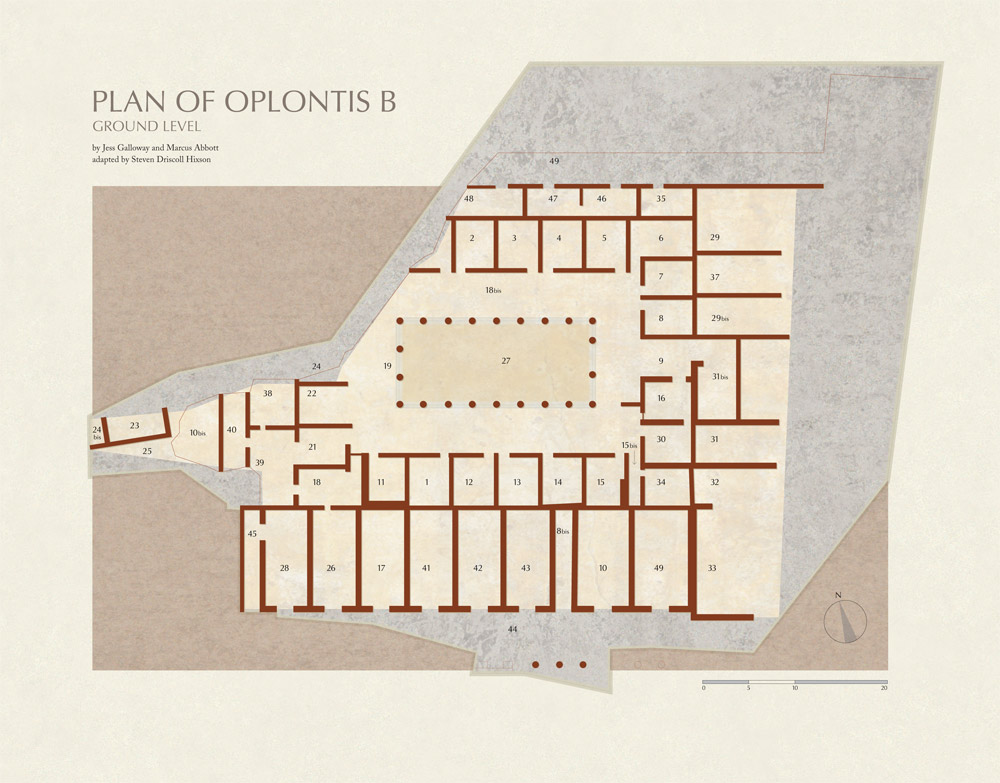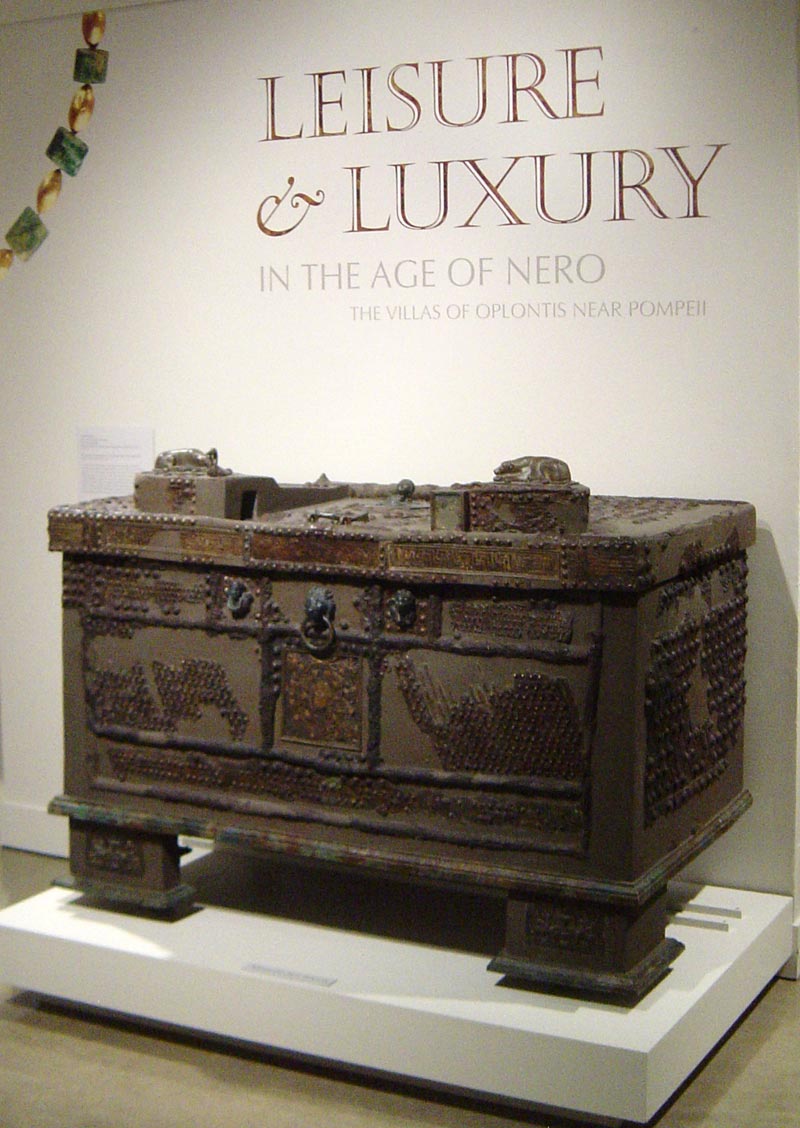
A strongbox was required to secure the proceeds and records of all Roman commercial operations.
On the lid of the strongbox, two dogs face each other. Near their heads are two small rectangular bases, on one of which a bronze duck perches—the second duck is missing. In the center of the lid, a female head emerges from a tondo (circle). The feet of the chest are decorated with two griffins in relief facing a crater (wine vessel). In the middle of the front of the chest is a square panel inlaid with a silver and copper head of Silenus, a follower of the god Bacchus (Dionysus). Above that panel is a bronze lion’s head with a ring in its mouth between two bronze busts of cupids. Above the lion an inlaid Greek inscription reads:
“Pythonymos, Pytheas, and Nikokrates, the workers of Heracleides made this.” Πυθώνυμος Πυθέας Νικοκράτης οἱ Ἡρακλείδου ἄνδριοι ἐπιόουν
The strongbox has a complicated locking mechanism. The dog and duck sculptures on the lid hid the bolt that was used to close the chest. To open it, one first had to pull out the female tondo, which covered the keyhole. Internal bolts were then moved by pulling the lion’s head and rotating the cupid’s head.



